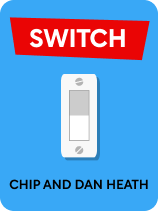

This article is an excerpt from the Shortform book guide to "Switch" by Chip and Dan Heath. Shortform has the world's best summaries and analyses of books you should be reading.
Like this article? Sign up for a free trial here .
What is the Haddon Matrix? How does it make change easier?
The Haddon Matrix is a thought process that prompts you to think about pre-incident, incident, and post-incident. You can use it to change behavior by considering how to prevent bad behaviors from occurring, reduce harm when the bad behavior does occur, and respond in a way that minimizes the negative effects of the bad behavior.
Read more to learn about using the Haddon Matrix model to change behavior.
Environment-Building Tool: The Haddon Matrix
Injury-prevention experts—responsible for inventions like childproof medicine bottles and crumple zones on cars—use a framework called the Haddon Matrix to think about how and why accidents happen. The Haddon Matrix model has three parts: pre-incident, incident, and post-incident. For example, if your goal was to find ways to decrease fatal injuries from collisions between bikes and cars, you would consider:
- What would prevent the incident from happening (pre-incident): wider bike lanes, right-of-way for bikes laws, mandating front and rear lights on bikes, mandating reflective clothing on bikers, and so on.
- What can reduce the harm of the incident when it inevitably happens (incident): helmets, softer crumple zones on cars, protective vests for bikers, and so on.
- What can minimize the negative effects of the incident (post-event): well-run medical response teams, more people trained in basic first aid, and so on.
When setting up change-supporting environments, you can use a Haddon Matrix thought process—consider ways to prevent bad behaviors from occurring, how to reduce harm when the bad behavior does occur, and how to respond in a way that minimizes the negative effects of the bad behavior.
Imagine you make a goal of eating healthier.
- Pre-incident: You rid your house of junk food, add “go to farmer’s market” to your Saturday schedule, and start learning how to meal prep so you won’t be tempted by “easy” food.
- Incident: You give in and head for the office vending machine, but only ever keep $1 in loose change at your desk to avoid binging. You keep a bar of dark chocolate in the house so your midnight cravings are satisfied in a relatively healthy way.
- Post-incident: You let yourself have a huge “cheat day,” so you follow it up with a day of eating at least five different vegetables. You bought a jumbo pack of chips, so you leave it in the office break room to be shared by the whole office.
Using the Haddon Matrix model as part of a change-supporting environment can help you effect real change.

———End of Preview———
Like what you just read? Read the rest of the world's best book summary and analysis of Chip and Dan Heath's "Switch" at Shortform .
Here's what you'll find in our full Switch summary :
- Why some changes succeed while others fail
- Actionable advice for creating changes that not only succeed but stick
- The three essential elements for successful change






